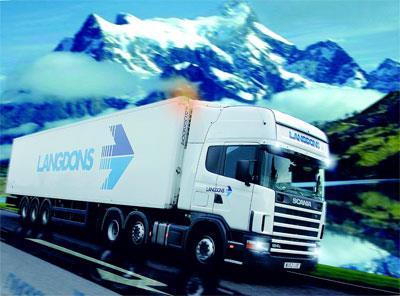
The rising cost of fuel and improving load-fill are challenges that all UK hauliers are faced with. But for those that run long-distance routes in and out of Scotland, the need to improve vehicle utilisation in a market where freight traditionally flows in to Scotland, with very little exported to the rest of the UK, is becoming increasingly imperative.
The FTA published its Scottish logistics report, revealing research into the state of road, rail, sea and air freight in the country, at the annual Scottish Supply Chain Conference in Glasgow last month. This showed that, for every tonne of road freight exported from Scotland to England and Wales in 2010, 1.2 tonnes were imported, down from an average of 1.3 tonnes since 2000.
Economical
These figures suggest that obtaining backloads is harder for Scottish operators, and many confirm this is the case. With rates running at an all-time low, obtaining a backload is key to making long-distance deliveries worthwhile – with some operators even turning work away if they are unable to find a backload.
“You need to get a backload – it’s crucial,” said David McCutcheon, MD at Bothwell-based next-day delivery firm Bullet Express. “We price the job on the basis of whether we get a backload or not.”
Freight flow
Bullet Express is one of the many Scottish operators that makes regular deliveries to customers in England. Despite 70% of its business coming out of its Bothwell base, defying the traditional freight flow from England into Scotland, it still sees obtaining a backload as imperative.
Jim Macauley, MD at Glasgow’s Cadzow Heavy Haulage, said this is a problem faced by his company. The operator regularly runs a machinery and plant hauling service to and from South-ampton, Swansea, Plymouth, Londonderry, Cork and Edinburgh. With 70% of its routes classed as long distance, getting a load to take back to its base is vital to cover its running costs. “We sometimes come back empty, but 75% of our backhauls are full,” Macauley said. “We’re not making any money and we’re not losing any.”
Ensuring that trailer capacity is filled on inward and outward routes is another challenge operators are experiencing. Langdons, which provides a nationwide frozen and chilled food distribution service on a pay-by-pallet level, said the distribution of its sites – one in Glasgow and seven in England – speaks volumes about the nature of freight flow between the two countries. Out of the approximate 10,000 pallets it moved in September, 7,000 were transported into Scotland and only 3,000 were exported to England.
Although Langdons aims for a minimum load fill of 70% across its 250-vehicle fleet, general manager for Scotland, Malcolm Wilde, said these vehicles need to be on the road regardless of whether they are full or not. “The full loads traffic is reducing in the market because people aren’t buying,” he said. “Everything is about just-in-time delivery. Low volumes at high frequency is driving the market.”
Although Langdons operates a network that can handle smaller loads, Wilde said that the lack of full-load movement in and out of Scotland can be detrimental to smaller operators that rely on full loads to maximise vehicles’ usage. “It’s damaging for regional hauliers that depend on full-load movements,” he said. “If those full loads aren’t there then they can’t do the job.”
Volume increase
Despite this, Langdons has upped its volumes to England and exports have been on the increase for the past three years. Before 2009, when its Glasgow depot opened, the company delivered into Scotland but was regularly forced to run empty on return journeys to England as it was rarely able to find a load. Now, 30% of its loads leave the country from its Glasgow depot, which has improved its backload rates significantly.
But despite these mixed backhaul figures from operators in both countries, many have chosen to reduce empty running and improve sustainability by joining a network.
Joining up
Andy Turner, MD of Palletways’ owned operations, said its members, including seven that operate out of nine locations in Scotland, are improving their backhaul rates by joining the network. “In terms of backhaul, the whole network has a good carbon footprint,” Turner said. “They will go out full, do their deliveries, collect from the customer and go back to the hub. In terms of vehicle utilisation, they are getting a full load from their customers.”
Although there is the perception that exporting a load from Scotland is becoming more justifiable because of the number of English retailers that want product taken to Scotland, in reality obtaining a backload is still difficult as retailers are not choosing Scottish operators for their distribution. But with 18 large DCs opening in Scotland over the past 10 years, including the largest European Amazon DC in Fife last year, it is hoped the amount of freight being exported should improve and boost operators’ backhaul rates.














